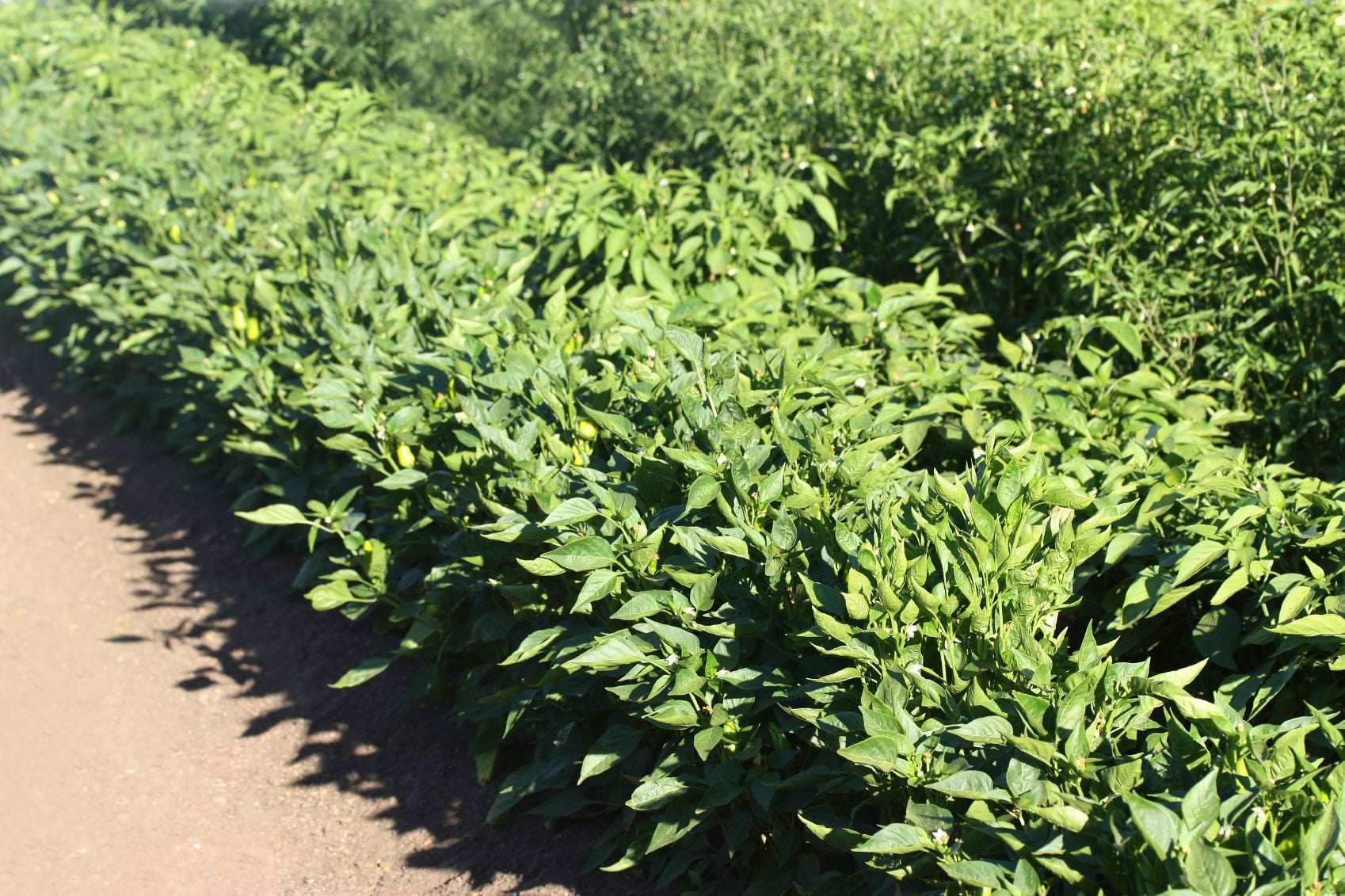Why A Pepper Plant Won't Produce Flowers Or Fruit

I had the most gorgeous bell peppers in the garden this year, most likely due to the unseasonably warm summer in our region. Alas, this is not always the case. Generally, my plants set a couple of fruit at best, or no fruit on the pepper plants at all. That led me to do a little research on why a pepper plant won't produce.
Why a Pepper Plant Won't Produce
One reason for a pepper plant with no flowers or fruit may be the weather. Peppers are warm season plants suited to USDA zones 9b through 11b that thrive in temperatures of 70 to 85 degrees F. (21-29 C.) during the day and 60 to 70 degrees F. (15-21 C.) at night. Cool temps retard the plant’s growth, resulting in pepper plants that aren’t flowering, and thus, pepper plants not fruiting either. They need a long growing season with at least six hours of full sun. Be sure to wait for the soil to warm in the spring after all chance of frost has passed in your region prior to setting your transplants and to get a jump start on harvest, set out six to eight week old transplants. Conversely, extended temps over 90 degrees F. (32 C.) will engender peppers that may flower but incur blossom drop, hence, a pepper plant that is not producing. So a picky pepper plant with no flowers or fruit may be the result of an incorrect temperature zone, either too hot or too cold. Another common reason for a pepper plant not producing may be blossom end rot, which is caused by a calcium deficiency and occurs when night temps are over 75 degrees F. (23 C.). It appears, as the name indicates, as a brown to black rot on the blossom end of the fruit with a result in loss of the pepper. Speaking of a calcium deficiency, another problem with peppers not flowering or setting fruit is inadequate nutrition. Plants with too much nitrogen become lush, green, and large at the expense of fruit. Peppers need more phosphorus and potassium to set fruit. They don’t need a lot of food, 1 teaspoon of 5-10-10 at planting time and an additional teaspoon just at bloom time. Peppers need more phosphorus and potassium to set fruit. They don’t need a lot of food, 1 teaspoon (5 mL.) of 5-10-10 at planting time and an additional teaspoon just at bloom time. It might be wise to invest in a soil testing kit to verify if or what your soil may be lacking. If you’ve already planted your peppers and overfertilized, don’t despair! There’s a quick fix for overfertilization. Spray the plant with 1 teaspoon of Epsom salts dissolved in a spray bottle of warm water, 4 cups of water (940 mL.). This gives the peppers a boost of magnesium, which facilitates blooming, hence fruit! Spray the plants again ten days later.
Additional Reasons for No Fruit on Pepper Plants
It's also possible that your pepper won't set fruit because it's receiving inadequate pollination. You may want to help it out by hand pollinating your peppers with a tiny brush, cotton swab, or even your finger. In lieu of that, a gentle shake may aid in distributing the pollen. Control weeds and insects and give the peppers adequate irrigation to reduce the chance of stressing it. Lastly, frequent harvesting of peppers promotes a good fruit set, allowing the pepper to channel its energy into growing additional fruit once the others have been picked. Feed your peppers properly, make sure the plants have at least six hours of sun, keep the area around the peppers free of weeds, plant at the correct time, hand pollinate (if necessary), and irrigate with about an inch (2.5 cm.) of water per week and fingers crossed, you should have a bumper crop of peppers coming your way.
Gardening tips, videos, info and more delivered right to your inbox!
Sign up for the Gardening Know How newsletter today and receive a free copy of our e-book "How to Grow Delicious Tomatoes".

Amy Grant has been gardening for 30 years and writing for 15. A professional chef and caterer, Amy's area of expertise is culinary gardening.
-
 Looking For Plants To Give You The Soft And Fuzzies? Try These 5 Fuzzy Leaf Plant Options
Looking For Plants To Give You The Soft And Fuzzies? Try These 5 Fuzzy Leaf Plant OptionsLovers of texture, drama, silver foliage and tactile plants will adore these special sensory garden additions. These fuzzy leaf plant options will leave you all aglow
By Susan Albert
-
 Get Ready For A Summer Of Hummers! Grow These Full Sun Hummingbird Plants and Flowers
Get Ready For A Summer Of Hummers! Grow These Full Sun Hummingbird Plants and FlowersIf you’re lucky enough to enjoy a sunny backyard, make sure you are maxing out on your pollinator opportunities and grow these full sun hummingbird plants and flowers
By Tonya Barnett